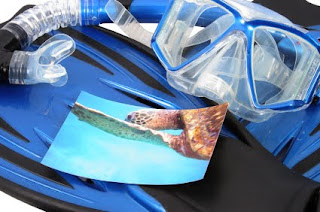Introduction to Aquatic Photography Part I: Getting Scuba Certified

This summer we’re providing a three part series that will cover a number of aspects of underwater photography. Whether you just want to get better underwater shots of your kids in the pool, expand your abilities when snorkeling or become scuba certified in order to shoot fantastic tropical fish and reefs, we’ll explain how to make the most of every situation. In Part I, we’ll cover how to choose the right scuba instructor and dive shop in order to get certification, allowing you the opportunity to begin your underwater photography safari.
Scuba-diving is a sport that conjures up ideas of adventure and treasure-hunting. What many people don’t realize is that it’s also a sport that can be done regardless of being 21 or 61, and for those who’ve always wondered what it would be like to shoot underwater, getting scuba certified is an important required step in reaching that goal.
Scuba-diving can be a bit perplexing because, unlike other sports, there really isn’t a way to dabble in it to see if you like it. But there are ways to decide if this is something you’d like to pursue. If you’re intrigued or interested, here are a few tidbits to help you get started:
Find a Reputable Dive Shop: Get started by doing an online search to find a few dive shops or instructors in your area. Ask about the possible options for courses and the time and equipment commitment needed to get started. Also ask about their certification—the best-known associations are PADI (Professional Association of Diving Instructors) and NAUI (National Association of Underwater Instructors). Inquire about the qualifications of their instructors and about their safety record. And ask what kind of money-back guarantee they have in case an emergency comes up and you’re unable to go through with the entire course.
Don’t Be Shy: If you have any questions, please ask them. Many people who worry they may not be able to learn to scuba-dive are pleased to find once they begin that they’ve discovered a passion for a new sport. There are a few considerations to ponder. For example, if you’re age 40 or over, you’ll need to have a physical first to ensure good health, and those with specific respiratory issues such as asthma will need to first check with their primary physician before continuing.
Get a Buddy: Scuba-diving is considered a social sport and having a friend with you in the class can help in a number of ways. You’ll learn various skills that require two people and you’ll also need a dive buddy whenever you go out after certification, so why not find a friend to join you? If you’re unable to find someone to take the course with you, the instructor will pair you up with someone, giving you an opportunity to make a new friend or two!
Find the Right Fit: Your relationship with your scuba instructor is very important so make sure you find someone with whom you feel comfortable learning. If you find that you’re having trouble relating to an instructor, politely inquire about other classes or options. Professional instructors shouldn’t be offended as they understand that there are some situations where a different instructor is a better fit for a particular client.
It’s important to note that the quality of the photographs you shoot will depend largely upon your skills underwater and how well you handle issues of mastering neutral buoyancy and related diving skills. Once you’ve received your scuba certification, you’ll then be in a position to begin your underwater photography adventures and can even enroll in an underwater photography course.

